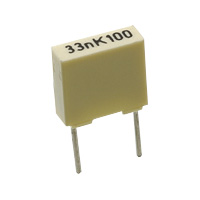Other than cost saving... those pennies add up real fast! 
I was thinking that it may add some "mojo" from the interaction of the signal from the two pots- kinda like simmering a marinade so that the ingredients blend together better. Or maybe like having a shared cathode resistor on an AC-30 style amp...
So is there any disadvantage to using a shared cap?
I usually wire them up with separate caps but I was going use one of them premium caps that cost more than a latte at Starbucks... or even a couple of them!
Steve Ahola

I was thinking that it may add some "mojo" from the interaction of the signal from the two pots- kinda like simmering a marinade so that the ingredients blend together better. Or maybe like having a shared cathode resistor on an AC-30 style amp...
So is there any disadvantage to using a shared cap?
I usually wire them up with separate caps but I was going use one of them premium caps that cost more than a latte at Starbucks... or even a couple of them!
Steve Ahola

Comment